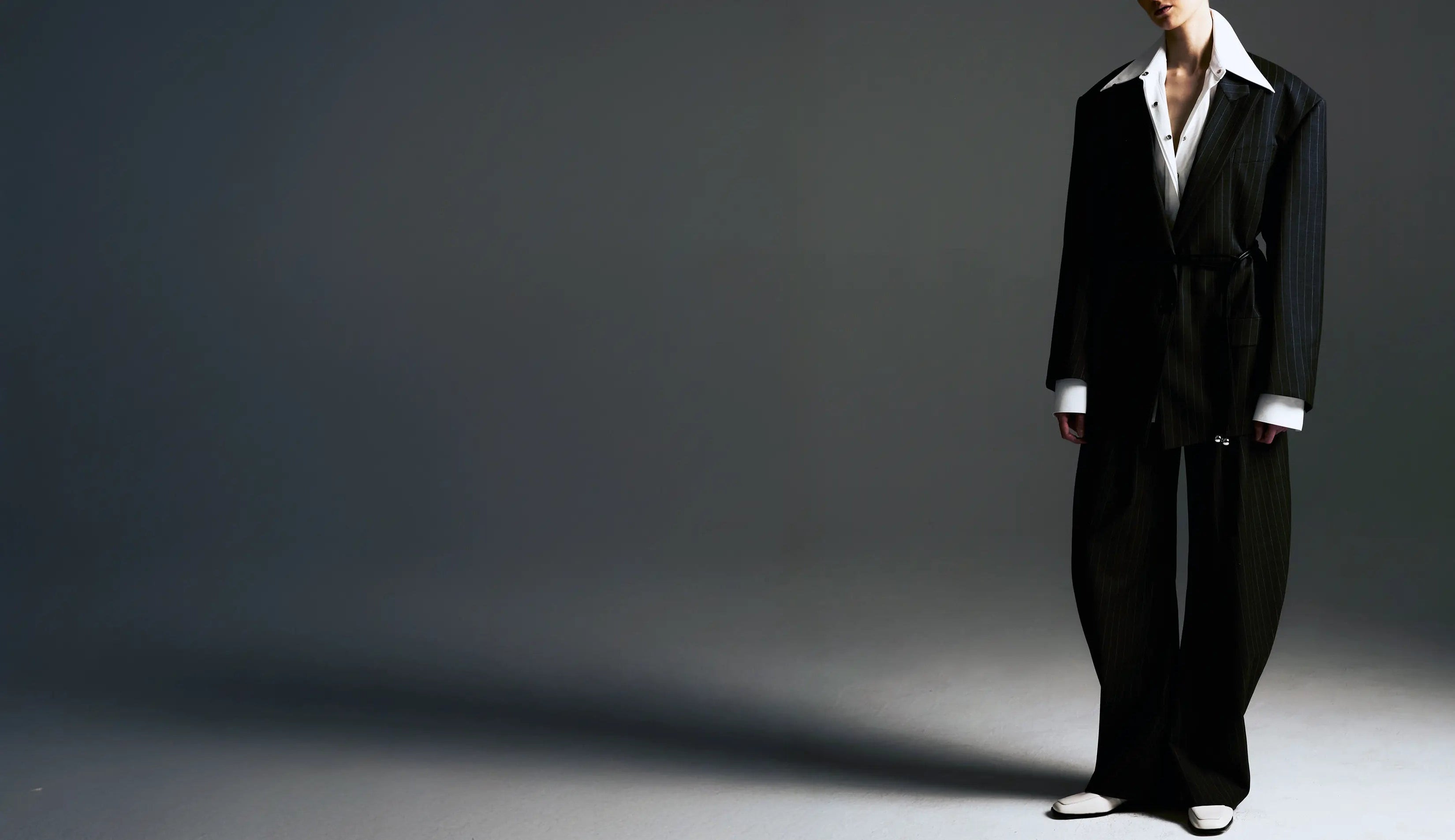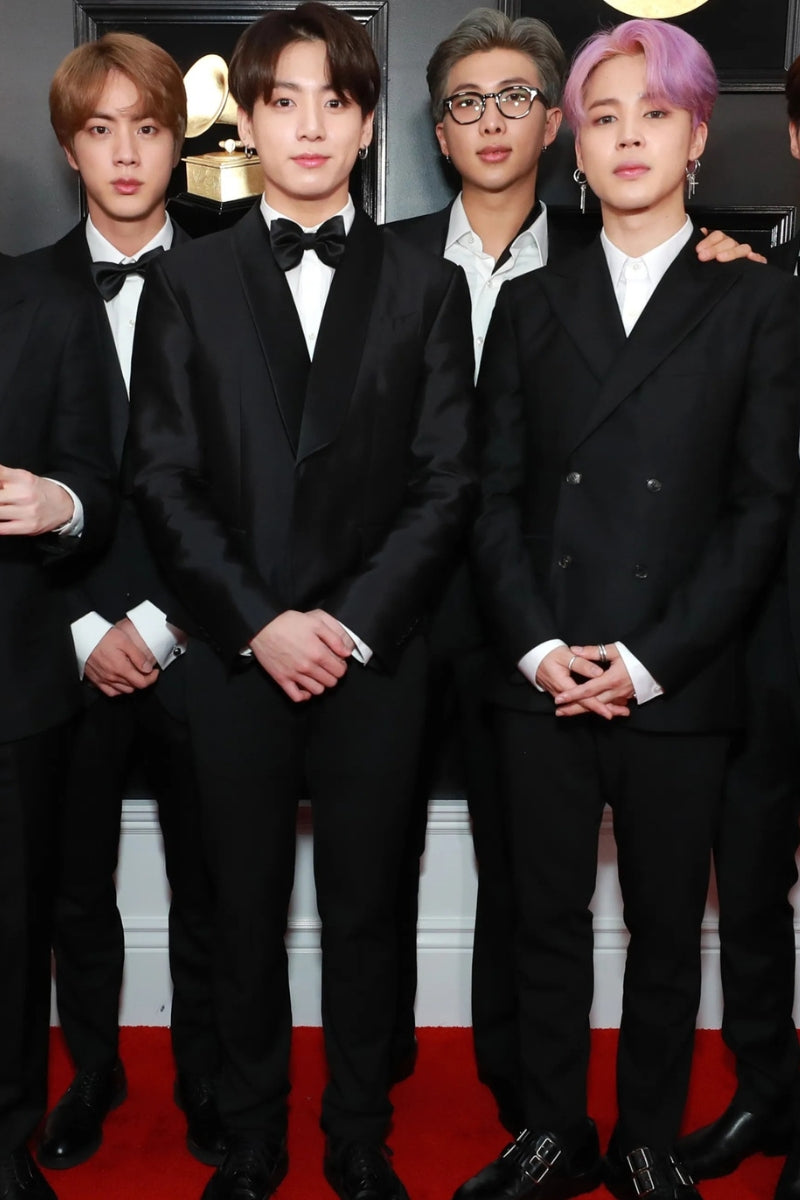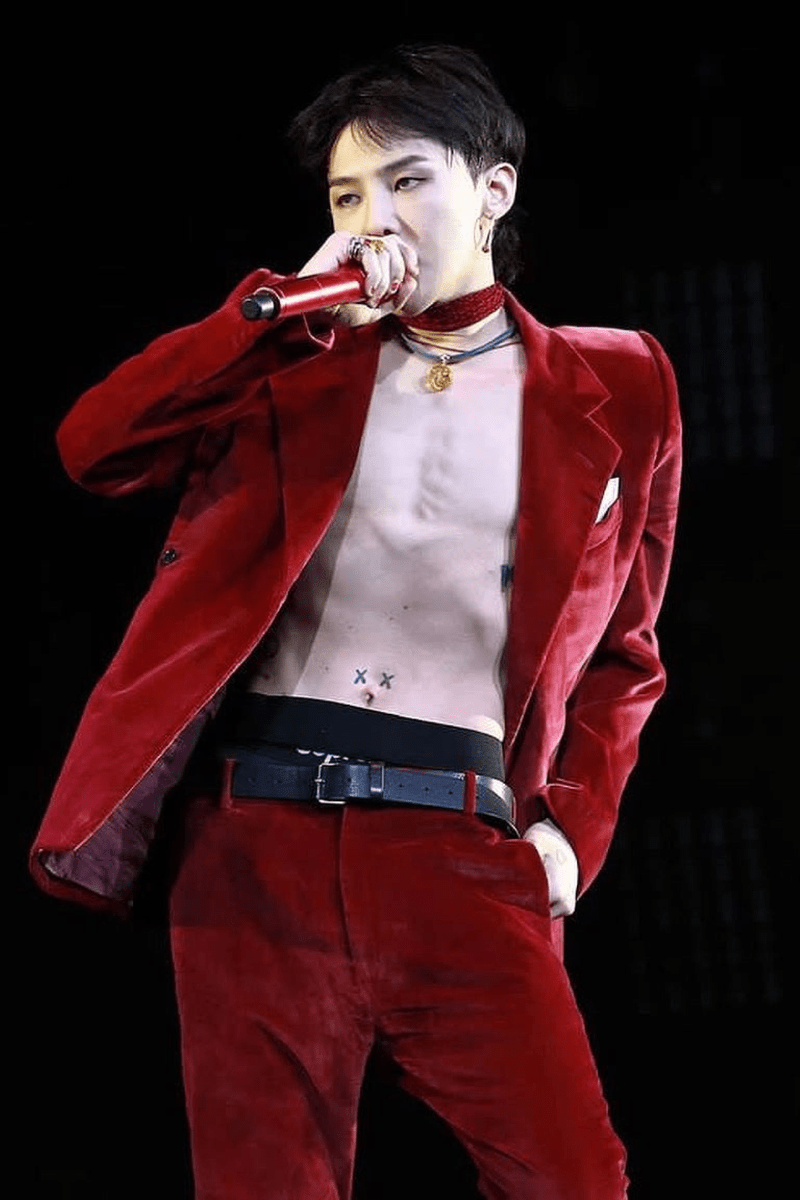Architectural Authority: Building Cultural Intelligence Into Retail Space
The technical precision visible in SKP-S Beijing's facade construction demonstrates engineering sophistication that rivals bespoke tailoring standards applied to architectural scale. The bronze banding requires understanding of thermal expansion, light reflection, and structural load distribution that parallels how superior jacket construction manages fabric tension, internal canvassing, and armscye placement to achieve both aesthetic impact and functional performance throughout extended wear periods.
Sybarite's design creates visual rhythm through repetitive wave elements that maintain individual character while contributing to overall architectural coherence—the same principle that governs princess seam construction in high-end garment making. Each architectural element must serve both structural and aesthetic functions while harmonizing with adjacent components to create unified visual impact. This technical approach to luxury retail space demonstrates how Chinese luxury commerce prioritizes engineering excellence over superficial decoration.
Professional wardrobes evolved past the obvious brand displays of the early 2000s—shouldn't luxury retail architecture evolve to prioritize authentic cultural expression over imported European aesthetic formulas? The flowing bronze bands create dynamic visual interest that responds to changing light conditions throughout the day, much like how hand-canvassed floating chest pieces adapt to body movement while maintaining garment structure and presentation quality.
Experiential Integration: Cultural Commerce Through Spatial Design
The soft interior illumination visible through SKP-S's curtained windows suggests luxury retail experiences that prioritize intimate discovery over overwhelming product display. Traditional Western luxury retail developed around concepts of abundant presentation—maximizing visual access to merchandise through extensive display systems. Chinese luxury retail increasingly emphasizes curated revelation, creating shopping experiences that unfold gradually through spatial progression rather than immediate visual consumption.
The architectural transition from dramatic exterior presence to intimate interior spaces mirrors how contemporary Chinese luxury consumption balances public social signaling with private aesthetic appreciation. The building's wave-like exterior creates strong street presence while the soft interior lighting suggests spaces designed for careful consideration rather than impulse purchasing decisions. This spatial strategy accommodates Chinese luxury shopping behaviors that prioritize relationship development and extended evaluation processes.
Modern luxury retail benefits from architectural approaches that support natural consumer behavior rather than forcing adaptation to artificial commercial frameworks. The technical precision required to achieve the flowing bronze facade parallels how superior tailoring accommodates natural body movement while maintaining sophisticated visual presentation—both approaches prioritize authentic functionality within aesthetically compelling frameworks.
The Reset Button: Redefining Luxury Retail Through Cultural Innovation
Traditional luxury retail developed when European fashion houses dominated global luxury markets, but economic growth and cultural sophistication in China fundamentally alter how luxury commerce operates within contemporary market conditions. SKP-S Beijing represents retail experiences that feel culturally authentic rather than imported, creating new definitions of luxury shopping that prioritize genuine cultural engagement over superficial brand presentation.
The reset button mentality applied to luxury retail creates opportunities for authentic innovation that maintains quality standards while eliminating unnecessary cultural barriers to luxury appreciation. Chinese luxury retail demonstrates that global brands can create culturally resonant experiences without diminishing brand prestige, provided that architectural design and spatial programming remain sensitive to local cultural preferences and shopping behaviors.
This approach challenges traditional luxury retail models that depend on European aesthetic authority to justify premium positioning in international markets. SKP-S success suggests that consumers value authentic cultural integration and innovative spatial design over imported luxury formulas when given genuine alternatives. Traditional luxury retail gatekeeping is the commercial equivalent of using a BlackBerry in 2025—technically functional but fundamentally misaligned with contemporary cultural dynamics and consumer expectations.
Platform Architecture: Technical Infrastructure Supporting Cultural Commerce
The integration of dramatic exterior presence with intimate interior spaces creates a unified retail platform that accommodates contemporary Chinese luxury consumption patterns more effectively than separated traditional systems. The architectural transition from public street engagement to private shopping experience mirrors natural luxury purchasing behaviors that prioritize social validation followed by careful personal evaluation and relationship-based decision making.
The technical infrastructure underlying SKP-S enables luxury commerce that feels culturally embedded rather than commercially imposed. Consumers experience architectural progression that supports natural shopping rhythms—initial visual attraction, gradual spatial revelation, intimate product encounter, and comfortable decision-making environments. This architectural integration creates natural luxury discovery mechanisms that traditional retail layouts struggle to replicate through conventional merchandising approaches.
Contemporary luxury retail benefits from architectural integration that supports cultural shopping preferences rather than forcing adaptation to artificial commercial frameworks. The floating canvas technique used in superior bespoke construction works because it allows natural drape rather than imposing rigid structure—successful luxury retail architecture operates on similar principles by facilitating rather than constraining authentic cultural expression and natural shopping behaviors.
Economic Transformation Through Architectural Innovation
The architectural sophistication demonstrated by SKP-S Beijing creates economic opportunities for both luxury brands and Chinese consumers that traditional retail formats actively constrained. International luxury brands access authentic Chinese market credibility through retail environments that reflect actual cultural preferences rather than superficial interpretations of Chinese aesthetics filtered through Western design assumptions.
Chinese luxury consumers experience retail environments designed specifically for their cultural preferences and shopping behaviors rather than requiring adaptation to European retail formats that often feel culturally foreign or commercially artificial. This direct cultural accommodation model creates sustainable luxury retail that benefits from genuine cultural integration rather than depending on imported prestige or manufactured exclusivity to justify premium positioning.
The economic efficiency gained through culturally authentic retail design enables more effective luxury commerce that maintains brand prestige while eliminating cultural translation costs typically associated with adapting European retail concepts to Chinese market conditions. Luxury shopping becomes more accessible to consumers who appreciate authentic cultural integration and architectural innovation without the cultural accommodation costs typically required for European luxury retail experiences.
Quality Authentication Through Architectural Excellence
SKP-S Beijing's success depends on architectural quality that creates natural luxury authentication without traditional European retail authority systems. Chinese luxury consumers evaluate retail environments, brand presentation, and spatial quality through cultural frameworks that prioritize architectural innovation and authentic cultural integration over imported European luxury retail formulas or manufactured brand narratives.
The architectural validation embedded in SKP-S design enables consumers to assess luxury authenticity and brand quality through direct spatial experience rather than relying solely on traditional luxury marketing claims or European retail authority. This architectural authentication creates natural filtering mechanisms that promote genuine quality while exposing superficial luxury attempts that lack authentic cultural understanding or architectural excellence.
Traditional luxury retail authentication relied on European cultural institutions and architectural authority that many Chinese consumers experienced as culturally distant rather than personally relevant. SKP-S architectural innovation democratizes luxury assessment by creating spaces that reflect shared cultural values and aesthetic preferences, enabling more comprehensive luxury evaluation than individual European retail authority alone can provide.
The Thick Skin Philosophy: Building Resilient Luxury Commerce
The thick skin approach to luxury retail architecture—building cultural authenticity and architectural excellence into fundamental spatial design rather than treating these elements as decorative afterthoughts—appears throughout SKP-S Beijing's construction and programming. The building must establish genuine credibility within communities that possess sophisticated architectural knowledge and extensive luxury retail experience developed through years of international brand exposure.
Chinese luxury retail succeeding in contemporary markets demonstrates resilience by prioritizing actual architectural innovation and authentic cultural integration over superficial design techniques or imported European retail formulas. This approach creates sustainable retail environments that improve through consumer feedback and cultural evolution rather than depending on artificial luxury mystique or manufactured exclusivity to maintain commercial effectiveness.
The thick skin philosophy translates to luxury retail that anticipates and accommodates sophisticated cultural evaluation while maintaining authentic architectural standards throughout all spatial design and brand presentation. Rather than creating fragile retail environments that depend on cultural isolation or consumer naivety, successful Chinese luxury retail builds architectural credibility that benefits from transparent cultural exchange and community validation processes.
Technical Construction in Architectural Luxury Implementation
The facade construction visible in SKP-S Beijing demonstrates technical standards that parallel bespoke tailoring quality applied to architectural scale. The bronze banding system requires understanding of structural engineering, thermal properties, and visual impact that mirrors how superior garment construction manages fabric behavior, internal structure, and aesthetic presentation throughout extended use periods.
The precision achieved in the wave-like facade requires technical knowledge of material properties and construction methods that separate custom architectural work from standard commercial building techniques. Professional architectural luxury increasingly incorporates engineering sophistication that achieves bespoke-level quality using innovative materials and construction methods—technical approaches that communicate excellence while supporting long-term performance standards.
Contemporary luxury retail architecture can incorporate technical construction knowledge without requiring full custom fabrication by understanding architectural techniques that enhance standard commercial construction. Structural innovations, material applications, and proportional refinements create retail environments that demonstrate technical excellence while supporting luxury brand partnerships through authentic quality representation rather than superficial decorative display.
Global Integration: Chinese Innovation in International Luxury Markets
The success of Chinese luxury retail innovation suggests models that could transform international luxury commerce approaches. Western luxury brands observing SKP-S effectiveness recognize opportunities to create more authentic cultural relationships while maintaining brand prestige through direct engagement with diverse cultural communities rather than depending on European retail authority for global market validation.
The integration of cultural authenticity, architectural innovation, and genuine consumer engagement that defines successful Chinese luxury retail offers templates for international luxury commerce evolution that benefits both brands and consumers. These approaches enable genuine cultural exchange that maintains luxury standards while eliminating unnecessary cultural barriers that prevent authentic luxury appreciation and access across different cultural contexts.
International luxury commerce can learn from Chinese retail innovation without cultural appropriation by focusing on underlying principles that improve authentic cultural representation and architectural excellence. Cultural integration, technical innovation, and direct consumer engagement represent universal improvements to luxury retail that enhance authenticity regardless of specific cultural implementation details or regional market characteristics.
Contemporary Applications: Western Integration of Chinese Innovations
Modern luxury retail can incorporate Chinese architectural innovations without cultural appropriation by understanding underlying principles that improve authentic cultural representation and spatial design excellence. Architectural integration, cultural sensitivity, and technical innovation represent improvements that enhance luxury retail effectiveness regardless of specific architectural implementation or cultural styling preferences.
The culturally-integrated retail that drives Chinese luxury success translates to Western contexts through architecturally sophisticated retail environments, authentic cultural engagement, and community building around shared aesthetic appreciation that respects cultural diversity. These applications enhance contemporary luxury retail while maintaining respect for the cultural contexts that developed these sophisticated architectural approaches.
Contemporary architectural education can integrate analysis of Chinese luxury retail innovation into curricula that address global retail evolution alongside traditional luxury commerce methods. Students gain appreciation for cultural integration while learning applications that enhance their understanding of luxury retail dynamics and authentic architectural representation across different cultural contexts.
Advanced Integration: Architectural Intelligence in Professional Luxury Development
Professional luxury industry participants increasingly study Chinese retail architectural innovation for insights that inform international luxury commerce approaches. The cultural authenticity and architectural excellence that drive Chinese retail success provide frameworks for developing more effective luxury commerce that benefits both brands and consumers through improved cultural representation and spatial design.
The cultural validation mechanisms and architectural quality standards developed through Chinese luxury retail offer models for creating more authentic luxury commerce that maintains brand prestige while eliminating artificial cultural barriers. These approaches enable luxury professionals to create sustainable retail strategies that prioritize genuine cultural value creation over superficial architectural manipulation and manufactured exclusivity.
Architectural integration lessons from Chinese innovation can inform Western luxury retail evolution that accommodates natural cultural diversity rather than forcing adaptation to artificial retail frameworks designed for European luxury traditions only. Understanding how Chinese luxury retail succeeds enables professionals to create more effective cultural relationships while maintaining authentic quality standards and architectural innovation.
Future Evolution: Cultural Democracy in Global Luxury Architecture
The intersection of Chinese retail innovation and international luxury commerce suggests future developments that could transform how luxury brands approach cultural representation and global market engagement through architectural design. The cultural intelligence and authentic representation that enable Chinese retail success provide templates for creating genuine luxury democratization that maintains quality standards while eliminating unnecessary cultural access barriers.
Advanced luxury retail platforms incorporating cultural validation and architectural excellence capabilities could enable global luxury commerce that operates more effectively than traditional European retail authority systems. These environments could provide authentic cultural representation while maintaining quality standards through community engagement rather than institutional gatekeeping that often prioritizes commercial interests over authentic cultural representation and architectural innovation.
The global networks developing around luxury retail innovation create opportunities for cultural exchange that benefits both luxury brands and diverse consumer communities through improved representation and architectural development. Practitioners can study Chinese innovation while contributing to evolution of these methods for international applications, creating sustainable models for cultural authenticity in luxury retail architectural contexts.
Contemporary luxury retail informed by Chinese architectural innovation represents evolution that honors cultural diversity while addressing global market requirements. SKP-S Beijing's flowing bronze facade, positioned within authentic Chinese cultural context, embodies retail transformation that makes luxury commerce genuinely inclusive while maintaining quality standards and architectural excellence that artificial retail systems cannot replicate effectively.
The technical precision visible in the building's construction—wave-like bronze banding, soft interior illumination, cultural spatial programming—demonstrates possibilities for luxury retail that enhances cultural representation rather than exploiting cultural curiosity. The architectural revolution occurring through Chinese retail innovation creates sustainable models for luxury commerce that benefits both brands and consumers through authentic cultural exchange rather than manufactured retail manipulation or cultural appropriation.




